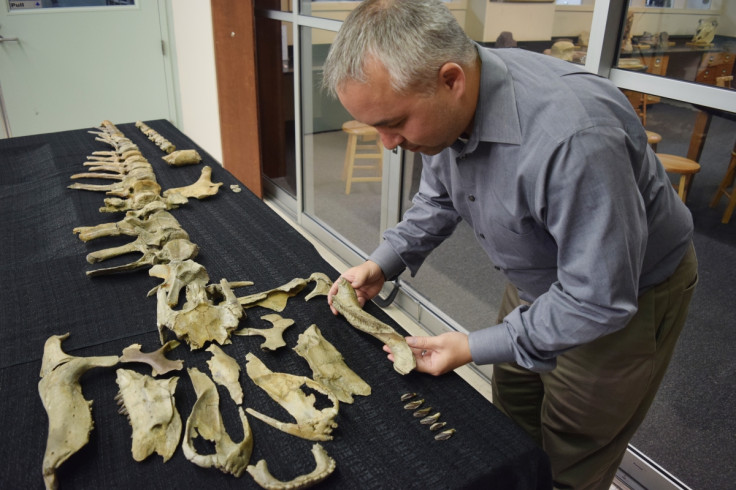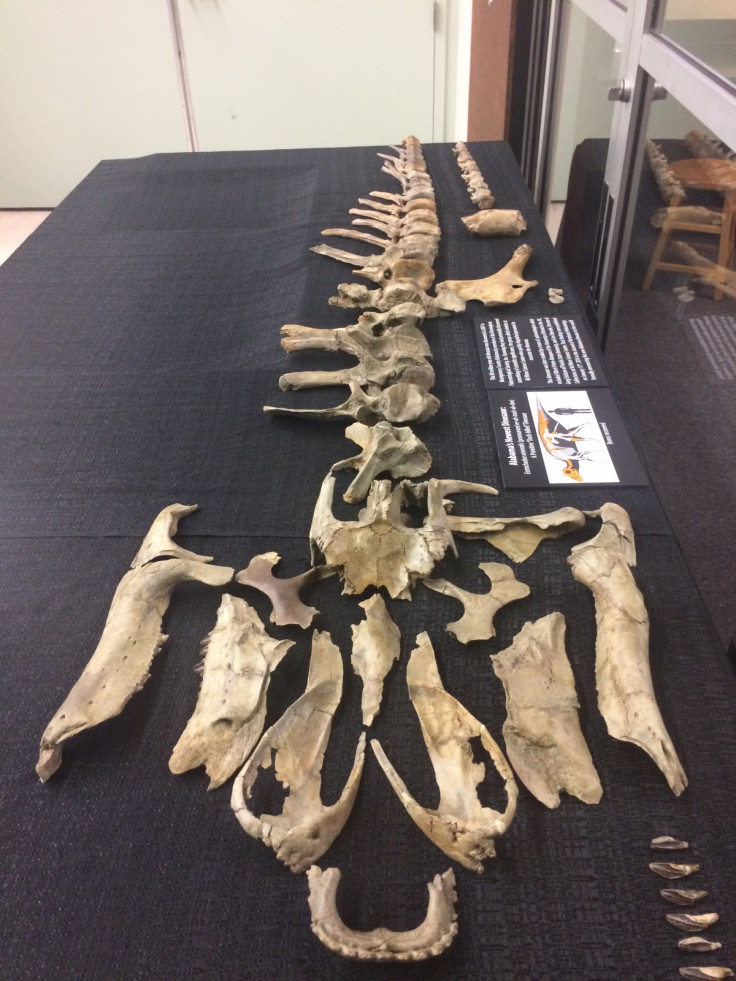Eotrachodon: 83 million-year-old 'ugly' duck-billed dinosaur skeleton discovered in Alabama

A 30-foot long rare and 'ugly' dinosaur has been discovered on the east coast of the US. The duck-billed dinosaur is the most complete to ever be discovered in the region, which was then known as 'Appalachia' – a bigger area than what is known as Appalachia today.
The study, published in the Journal of Vertebrate Paleontology, shows that duck-billed dinosaurs originated in the eastern US. The 83-million-year old dinosaur, which has a large crest on its nose, has been named Eotrachodon orientalis – which translates as 'dawn rough tooth from the east'.
The duck-billed dinosaur, or hadrosaurid, has been estimated to reach up to 30 feet long as a fully matured adult – more than 15 times longer than the average fully grown male labrador retriever. The researchers also say that it mostly walked on its hind legs and had a scaly exterior.

They say, however, that there is one characteristic which makes this new dinosaur stand out from the rest.
"This thing had a big ugly nose," said Gregory Erikson, one of the researchers on the investigation. It had a large crest on its nose, several indentations on its skull, and unique teeth that the researchers believe were used to eat in a similar way to how horses and cows do today.
It was a group of amateur archaeologists that discovered the skeleton next to a creek in Montgomery County in Alabama. They soon realised they were looking at a big scientific discovery, and alerted experts.
Their find marks the most complete dinosaur skeleton found on the east coast of the US. It was discovered in Appalachia – a region stretching from Georgia and Alabama on the US east coast all the way to Canada.
The discovery proves that E. orientalis originated in Appalachia. The dinosaurs could not leave the region once they were there, as it was surrounded by an ocean that comprised of the now-known Gulf of Mexico and the Arctic Ocean.
"For roughly 100 million years, the dinosaurs were not able to cross this barrier," said Jun Ebersole from the McWane Science Centre in Birmingham, Alabama. "The discovery of Eotrachodon suggests that duck-billed dinosaurs originated in Appalachia and dispersed to other parts of the world at some point after the seaway lowered, opening a land corridor to western North America."
The skeletal remains of the dinosaur can be viewed by the public at the McWane Science Centre.
© Copyright IBTimes 2025. All rights reserved.





















